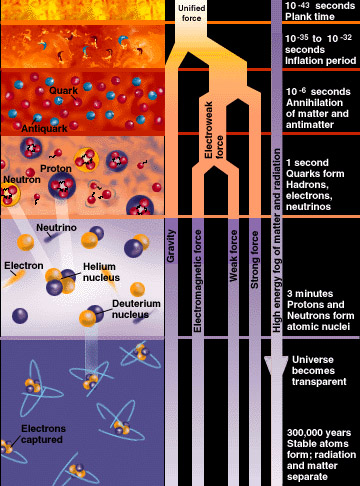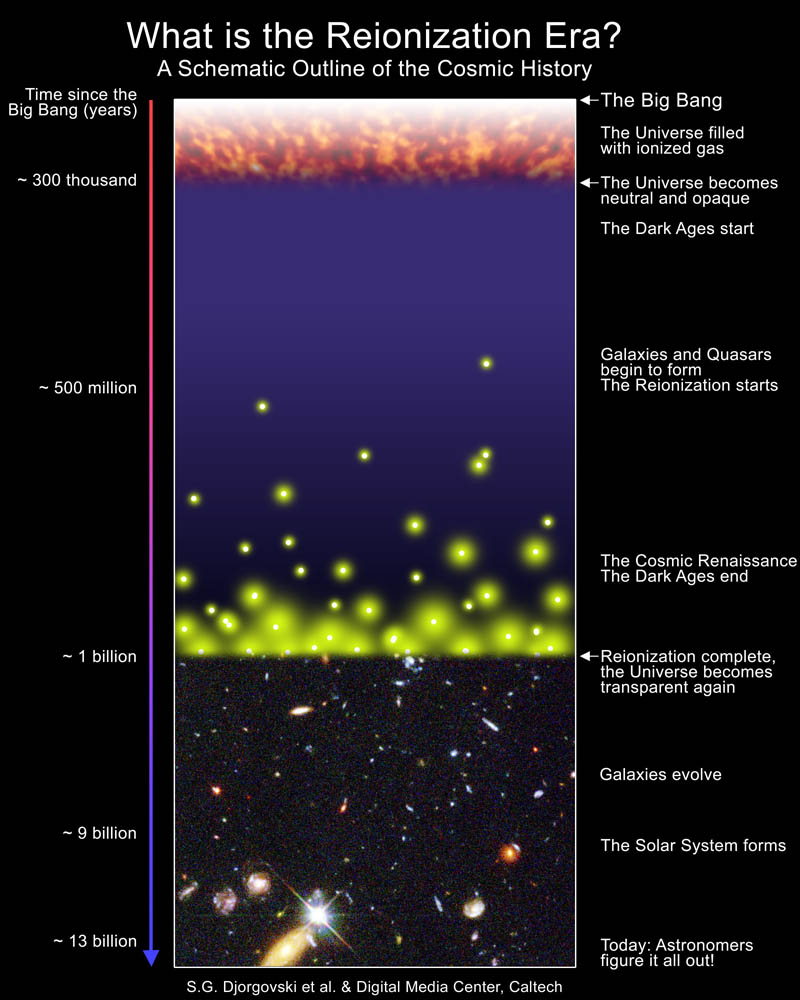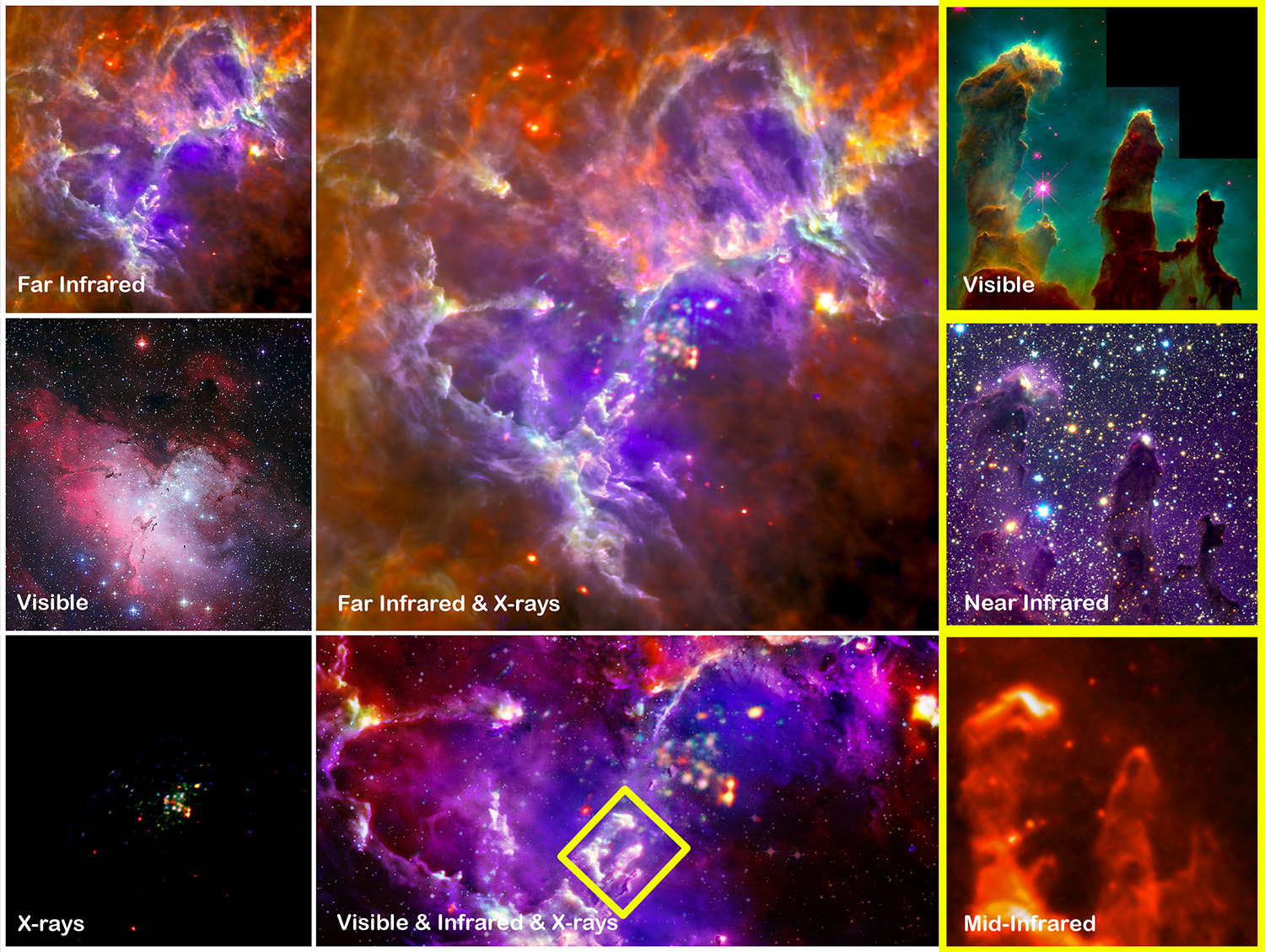Our Universe was born 13.7 billion years ago from a Standard Hot Big Bang and follows mathematical laws outlined in the Theory of Relativity. These laws have been incorporated into the Lambda Cold Dark Matter Model - Bolshoi Computer simulations of the local universe to produce good predictions of astronomical observations.Our Milky Way Galaxy formed 12.3 billion years ago and has been impacted by 6-8 Dwarf Galaxy Collisions/Mergers . It is currently merging with Sagittarius Dwarf Galaxy and moving towards a collision with Andromeda Galaxy and the Virgo Galaxy Cluster.Active periods in our Galactic Nucleus produce Galactic Jets and Galactic Bubbles. It is speculated that material from these Bubbles form the Dwarf Galaxies which orbit and collide with our Milky Way Galaxy. The source of Phosphorus and other Essential Elements along with Subatomic Cosmic Viral Particles may be supplied by these Jets and Bubbles.
Our Solar System was born in a Star Burst Cluster within a Molecular Nebula similar to the Eagle Nebula 4.58 Billion Years Ago. It evolved from a molecular cloud with atomic and subatomic contributions from :1. A Primordial Giant Molecular Hydrogen Cloud contributing Hydrogen, Helium, and Lithium2. 3 Planetary Nebulae - Providing most of the Carbon, Hydrogen, Nitrogen, Oxygen, and Sulfur3. Multiple Supernovas (3 Type Ibc, 2 Type IIa, 1 Type IIb, and 1 pair instablity Type) provided the Electrolytes and Metals to our proplyd. (Different supernovas provided the gold and silver atoms.)4. 2 Pulsar Jets irradiated the propyld of our Solar System5. Cosmic Rays irradiated the Cloud at different intensities during its evolution6. Gamma Ray Bursts, Xrays, UV, and Infrared light irradiate the Cosmic dust particles in the Cloud with different periodic intensities . The life giving entropic forces from these radiatons transformed biochemicals into macromolecular structures. These molecular building blocks subseqeuntly became encapsulated in Iron, Nickle, and Sulfur microspheares. The metal microsphere based Coacervates subsequently evolved on protoplanets and comets and became Precells containing replicons.7. Cosmic Life Giving Particles ( Buckyballs, Graphene, Polycyclic Aromatic Hydrocarbons, Polyphosphates, Perchlorate, and Polysulfides ) were present in the Molecular Nebula at the time of its formation.Sorting , Mixing, and Combinations of the Elements resulted from Gravity (Nebula Condensation and Accretion), Electroweak (Electromagnetic radiation, Magnetic fields, Ionic fields. and Hydrophobic/Hydrophyllic separations), and the Strong Forces (Radioactivity, Nuclear Fission and Fusion).Evolutionary stages from the effects of these forces on our solar system are outlined below:1. Condensing Molecular Nebula - ? Blok globule stage2. Proplyd with circumstellar dust disk and early Protostar3. Proplyd with minor planets, asteroids, dust and Central Protostar4. Proplyd circumstellar planets and sporadic Fusion ignition of our Protostar. ?Blok globule stage5. Herbig-Haro object producing stage (? late Blok globule stage ) with persisitent fusion and conversion of Protostar into Main Sequence G2 Class Star . Period lasting a few thousand years.7. Ort Cloud formation with planets in the early Nice model of planetary evolution8. Tilting of the orbits of Kuiper belt objects and the Earth (7 degrees) by the orbit of a companion Star10. Giant Planet migration in our Solar System 3.85 Billion years Ago causing the Late Heavy Bombardment during the Hadean and early Archaen Eons of Earths Evolution©1994-2012 Foster P. Carr MD all rights reserved


